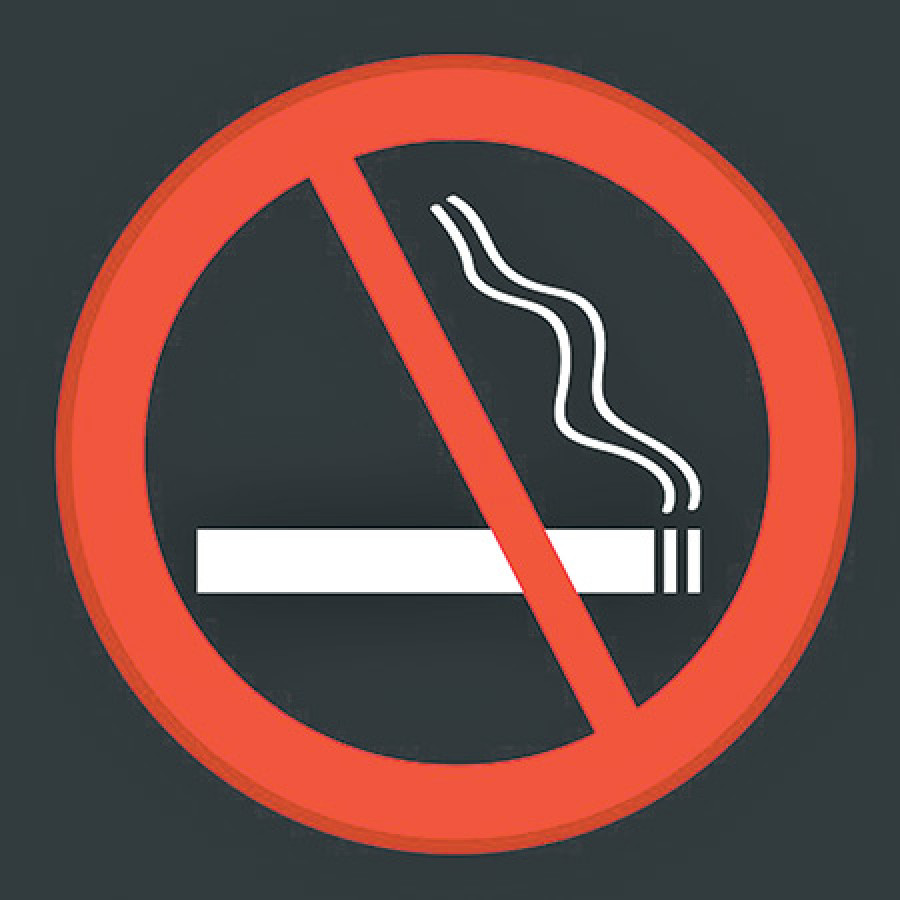Opinion
Where there’s smoke
One billion people around the world smoke and 6 million die each year due to tobacco use, according to a World Health Organisation (WHO) report.
Kishor Adhikari
One billion people around the world smoke and 6 million die each year due to tobacco use, according to a World Health Organisation (WHO) report. Tobacco consumption not only damages the health of consumers, low-income families also spend money on tobacco which may adversely impact resources for food, health and education. Smoking related diseases result in high productivity costs to the economy because of sick workers and lives lost prematurely. Tobacco control has been wisely included in the Sustainable Development Goals (SDGs). Tobacco consumption is directly or indirectly interconnected with a majority of SDGs.
Control measures
The WHO Framework Convention on Tobacco Control (FCTC), the world’s first treaty devoted to improving public health by curbing the demand and supply of tobacco, is a package of evidence-based tobacco control measures. Articles 17 and 18 of the FCTC relate to supporting alternative and sustainable livelihoods for tobacco farmers and protecting the environment and health of those involved in tobacco production respectively. Many developed nations are already following the treaty and achieving excellent results in reduction tobacco consumption.
Tobacco use is one of the major risk factors for non-communicable diseases. According to a 2013 survey of risk factors of non-communicable diseases conducted in Nepal, smokers make up 27 percent of the male population and about 11 percent of the female population. Government reports indicate that tobacco products are the major reason for 60 percent of the incidences of non-communicable diseases in Nepal, with cancer being the most common. According to the Cancer Relief Society, two persons die every hour from tobacco use.
Firm political commitment and intersectoral coordination between the government and non-governmental organisations are crucial to implement effective tobacco control programmes. The Ministry of Health has formulated effective policies and regulations to bring down tobacco consumption. Mandatory registration of tobacco sellers and a mandatory pictorial health warning (PHW) covering 90 percent of tobacco packaging are some of the recent regulations issued by the Health Ministry. Age restriction for buying and selling tobacco products, ban on advertising and sponsoring tobacco products in the media and ban on smoking in public places are some of the other remarkable steps it has taken.
One of the best measures in tobacco control is increasing taxes on tobacco products as it encourages smokers to give up and discourages potential smokers. A 2015 WHO report says, “Tobacco tax increases are the single most effective policy to reduce tobacco use. Governments need to tax all tobacco products in a manner that people do not opt out of one expensive product to a less expensive one.” The government of Nepal levies excise tax on tobacco products and import duty on foreign brands. The tax rate in Nepal is 28 percent, which is quite low compared to Bangladesh, where it is 76 percent, Sri Lanka 74 percent, Thailand 73 percent, Maldives 66 percent and India 60 percent. So, it is time to think about hiking taxes on tobacco to safeguard public health.
School curriculum
Though there are many excellent acts and regulations in line with the FCTC, the problem is the slow pace of implementation. It should be realised that only formulating laws and policies is not enough to tackle the tobacco epidemic. There must be successful implementation. There seems to be some penalty mechanism in places within the Kathmandu Valley even though it is not so consistent; but elsewhere in the country, people smoke openly in public places. Children as young as 12 or 13 years old can be seen smoking and buying cigarettes.
Government reports suggest that PHW has reduced cigarette smoking from 11 to five sticks per smoker daily. It is a matter of pride that Nepal is ahead of other countries in requiring PHW to cover 90 percent of tobacco packaging. It is moving towards plain packaging in the very near future. However, the statutory health warning on most tobacco products is printed in tiny letters that cannot be easily read. Moreover, the image printed on tobacco packaging is blurred so tobacco consumers are less likely to be scared while buying and consuming it. PHW would be more effective if there was a clear and realistic image of cancer lesions on tobacco packaging.
There is an urgent need to formulate committees and functional teams in peripheral communities to ensure community participation in assessing and monitoring tobacco use. Volunteers can even be used to warn tobacco lawbreakers in public places. Another prominent step towards tobacco control is incorporation of tobacco prevention content in the school curriculum. National surveys show that nearly 80 percent of smokers started lighting up during their school days. Considering this fact, we should incorporate maximum inputs regarding health hazards related to tobacco use in the school curriculum because the information currently available does not suffice.
Similarly, tobacco awareness initiatives should also be facilitated by prominent celebrities and media. Celebrities, being role models for youngsters, should come forward to promote tobacco prevention. The media can voluntarily promote the importance of preventing tobacco consumption continuously without looking for monetary benefits. Contrary to earlier times, consumption of tobacco products has become a social habit which is accepted by friends and families. There is no doubt that the ‘say no to tobacco’ initiative should come from the family level.
While talking about these recommendations to cut tobacco use, the welfare of tobacco farmers and tobacco traders should be assured by providing them suitable alternatives for their livelihood. Nepal is ahead of many countries in terms of policy formulation on tobacco.The country can set an excellent example in reducing the prevalence of tobacco use in the global arena if the Health Ministry effectively manages the policies and regulations for preventing the consumption and sale of tobacco products.
Adhikari is Head of Department, School of Public Health, Texila American University, Zambia




 11.12°C Kathmandu
11.12°C Kathmandu











